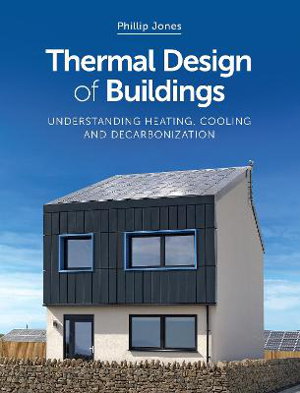
PublishedCrowood Press, September 2021 |
ISBN9781785008986 |
FormatSoftcover, 240 pages |
Dimensions24.6cm × 18.9cm × 1.7cm |
The way we heat, cool and ventilate our buildings is central to many of today's concerns, including providing comfortable, healthy and productive environments, using energy and materials efficiently, and reducing greenhouse gas emissions. As we drive towards a zero-carbon society, design solutions that combine architecture, engineering and the needs of the individual are increasingly being sought.
Thermal Design of Buildings aims to provide an understanding from which such solutions can be developed, placing technological developments within the context of a wider world view of the built environment and energy systems, and an historical perspective of how buildings have responded to climate and sustainable development. AUTHOR: Phillip Jones OBE is Emeritus Professor of Architectural Science at the Welsh School of Architecture, Cardiff University. For over forty years he carried out research, teaching and design in building environmental design and energy efficiency fields. He practices through Zenergy Design Ltd and Jones Kopitsis AG. He chairs the Welsh Government's Building Regulation Advisory Committee and Community Interest Company, Warm Wales. In 2020 he was awarded an OBE for services to Architecture and Decarbonisation. SELLING POINTS: . The way we heat, cool and ventilate our buildings is central to many of today's concerns . This informative book aims to provide an understanding from which such design solutions can be developed . Will be of great interest to architects interested in sustainability and the built environment . Case studies and research examples are used within the book supported by around 300 colour illustrations 105 colour illustrations, 190 figures

